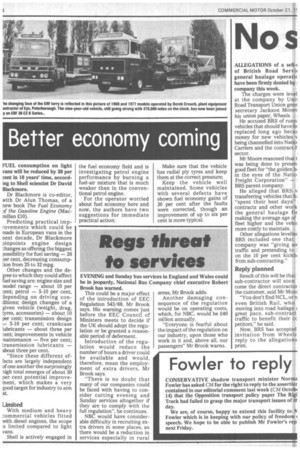Better economy coming
Page 6

If you've noticed an error in this article please click here to report it so we can fix it.
FUEL consumption on light vans will be reduced by 30 per tent in 10 years' time, according to Shell scientist Dr David Blackmore.
Dr Blackmore is co-editor, with Dr Alun Thomas, of a new book The Fuel Economy pf the Gasoline Engine (Macmillan £10).
Predicting practical improvements which could be made in European vans in the next decade, Dr Blackmore pinpoints engine design changes as offering the biggest possibility for fuel saving — 20 per cent, decreasing consumption from 25 to 32 mpg.
Other changes and the degree to which they could affect fuel saving are: engine size and model range — about 10 per cent; petrol — 5-10 per cent, lepending on driving conditions; design changes of a given vehicle (weight, drag, Lyres, accessories) — about 10 per cent; transmission design — 5-10 per cent; crankcase Iubricants — about three per :tent; improvements in vehicle maintenance — five per cent; transmission lubricants — about three per cent.
"Since these different effects are largely independent done another the surprisingly aigh total emerges of about 30 per cent potential improvement, which makes a very good target for industry to aim at
Limited
With medium and heavy commercial vehicles fitted with diesel engines, the scope Ls limited compared to light vans.
Shell is actively engaged in the fuel economy field and is investigating petrol engine performance by burning a fuel-air mixture that is much weaker than in the conventional petrol engine.
For the operator worried about fuel economy here and now, the authors have two suggestions for immediate practical action: Make sure that the vehicle has radial ply tyres and keep them at the correct pressure; Keep the vehicle well maintained. Some vehicles with several defects have shown fuel economy gains of 20 per cent after the faults were corrected, though an improvement of up to six per cent is more typical.






































































































